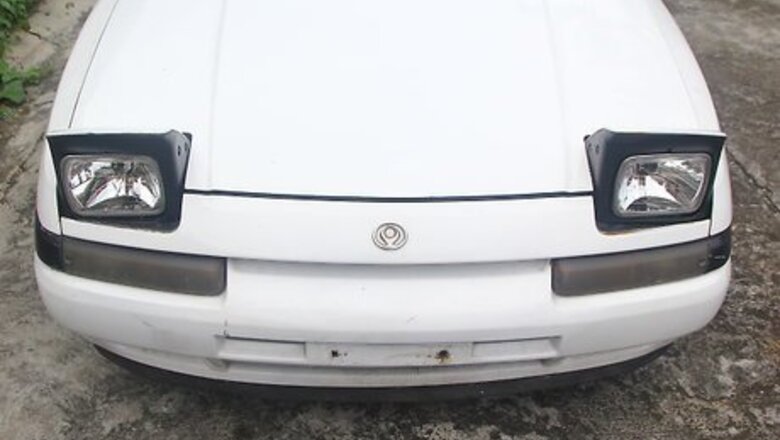
views
Prepping the Bumper

Remove the plastic bumper cover or mask it off with painter's tape. In order to keep from painting other parts of the car, you can either remove and paint the bumper separately or leave the bumper attached and carefully mask off the car body. Removing the bumper works best when you're repairing any scratches or cracks before repainting.

Wash the bumper cover thoroughly with degreaser and water. Scrub the surface well with a tack cloth along with soapy water. Using a degreaser like kitchen soap will help remove dirt and oil, leaving your bumper cover clean and ready for paint. The paint won't adhere properly if there's any dirt or waxy buildup on the surface of your car.
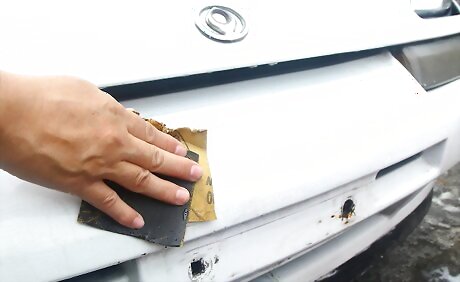
Wet sand the bumper cover with 600 grit sandpaper in alternating directions. Run your hand over the bumper to find any rough spots. Wet sand down these areas by hand with a spray bottle and some 600-grit sandpaper. Keep a constant layer of water between the sandpaper and bumper by spraying the area you're working on. Make sure to alternate directions as you sand, moving back and forth as well as up and down, in order to achieve a smooth, flawless finish.
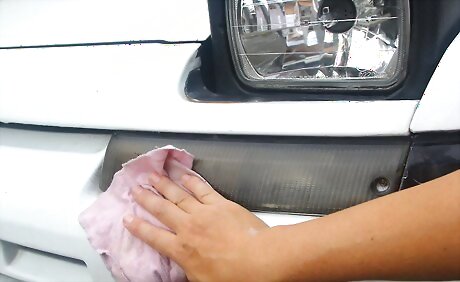
Wipe the bumper cover down with a clean tack cloth. Remove any dirt and dust from sanding with the soft cloth. The surface should be clean and dry in order for the paint to adhere properly.
Applying Paint
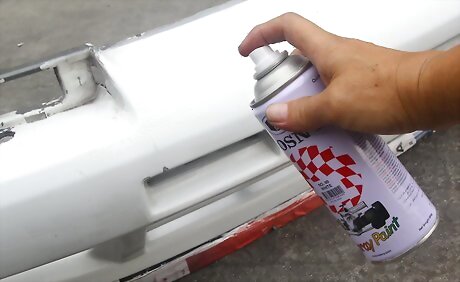
Use a spray can or gun to paint on a layer of base coat and let it dry. Hold the gun or can about 12 inches (30 cm) away from the surface and use steady, sweeping motions to apply the base coat paint, which should be the same color as the rest of the car. Overlap each pass by 50% for smooth, even coverage. Let the layer dry for 30 minutes. To protect yourself from harmful fumes, make sure to wear protective gear such as a face mask and gloves while painting. If you're using a spray can make sure to spray a bit of paint away from the bumper several times to clear out the nozzle.
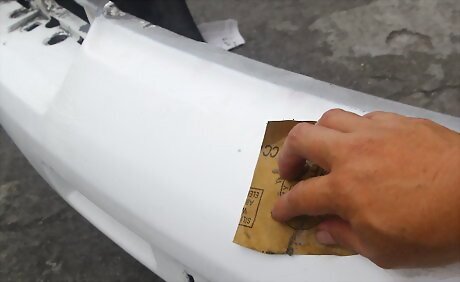
Wet sand any imperfections with 1500-grit sandpaper and wipe it down. After the first layer has dried, check for any drips or imperfections. Wet sand them smooth with a spray bottle and sandpaper. Wipe away any dust with a clean tack cloth.

Repeat the painting, drying, and sanding process 1-2 more times. Always wipe down the bumper cover with a clean tack cloth after sanding the new layer. Apply up to 3 coats total, or until the paint has full, even coverage.

Apply 2 layers of clear coat to seal in the base coat. Hold the can or clean spray gun of clear coat about 12 inches (30 cm) away from the bumper and spray on the clear coat in light, sweeping layers. Let the layer dry for 20 minutes, then apply a second coat and let it dry as well. Each time you go over the bumper with the clear coat, overlap the previous pass by 50% for the best coverage.
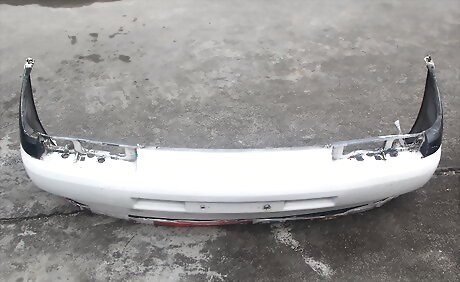
Let the bumper cover dry for at least 6 hours before driving or reattaching it. This time will let the paint cure and harden fully. The longer it dries, the longer the paint will hold up and remain durable, so you could even wait up to 24 hours. After the minimum 6 hours, you can remove any tape and masking materials from the car or reattach the bumper to the body.
Repairing Shallow Cracks and Scratches
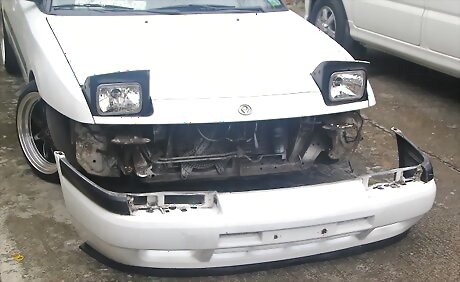
Take the plastic bumper cover off of the car. Different car manufacturers use different ways to attach the plastic cover, such as screws, tabs, bolts, and other fasteners. Examine your bumper to find the connection points, then remove any fasteners and slide the bumper free. These connection points may be near the trunk latch, tail lights, or wheel wells, as well as hidden beneath bumper fascia.
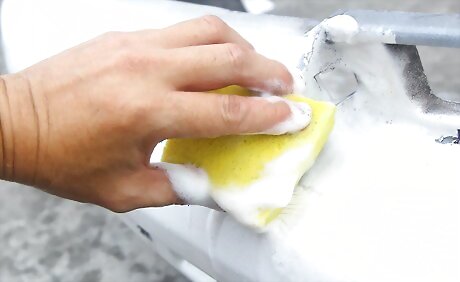
Scuff the damaged area and clean it with a plastic surface cleaner. Use some coarse sandpaper to lightly scuff up the plastic. Scuffing helps remove dirt buildup and creates a rougher texture to help the adhesive bond with the surface. After scuffing, wipe the area down with a plastic surface cleaner on a soft, clean cloth to remove any leftover dirt or grease.
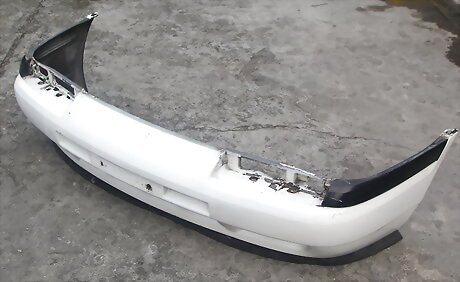
Rinse the surface and let it air-dry. Pour some clean water over the area, removing any residue from the surface cleaner. Set the bumper on an old towel and leave it until it feels completely dry.
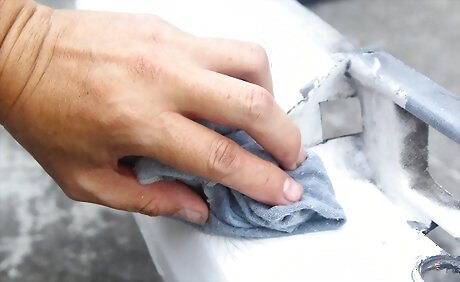
Wipe the area down with prep solvent in 1 direction, then sand the area. Use a clean cloth to spread prep solvent over the area. Prep solvent removes contaminants from the area, so make sure to only wipe it on in 1 direction instead of back and forth. Wiping in 2 directions will drag contaminants back into the repair area. Once the solvent is dry, sand the area by hand with 80-grit sandpaper.
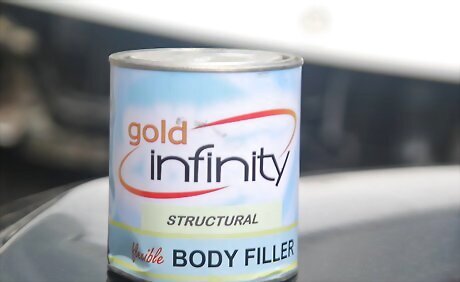
Consult an auto repair store to find the right adhesive. The kind of filler you use depends on the type of plastic your bumper is made of, which is indicated on the back of the bumper cover with stamped initials. Call or go in to ask someone at the counter of an auto repair store for some filler product recommendations before purchasing. The plastic types PP (polypropylene), PPO (polyphenylene oxide), and TPE (thermoplastic elastomer) will smear easily when ground or machine-sanded. Plastic types PUR (polyurethane plastic rigid) and TPUR (thermoplastic polyurethane elastomer) will turn to powder when they're ground or sanded down. The brand doesn't necessarily matter, but you should stick with the same brand throughout the entire repair process for the best results.
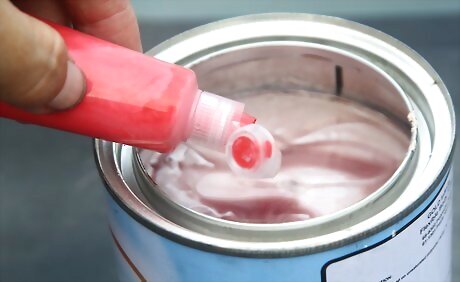
Mix and fill in damaged spots with a light layer of filler. Mix equal amounts of filler and hardener on a clean piece of cardboard. Use a putty knife to smooth the filler into any cracks that are less than 0.25 inches (0.64 cm) deep and leave a little extra on top. This way, when the filler dries and shrinks slightly, the cracks will still be filled.
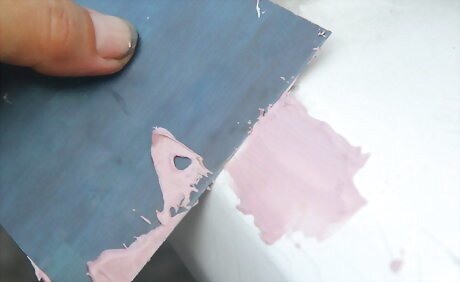
Let the filler harden for 20 minutes, then sand it level by hand. Start with 80-grit sandpaper, then move to 120-grit paper to level out the surface. Finish by wet-sanding with 400-grit paper to smooth everything down to the bumper's natural contour.
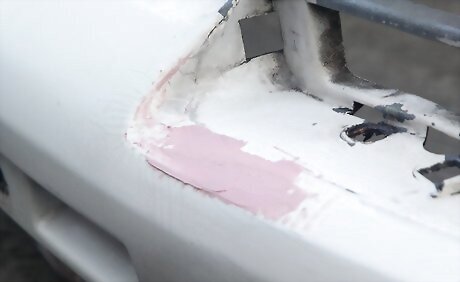
Apply 2 coats of flexible part sealer before priming and painting. Use a putty knife to spread the flexible part sealer over the filled-in area. Apply both layers immediately after the other while they're wet. After letting the sealer dry for 30 minutes, you're ready to start priming and painting.
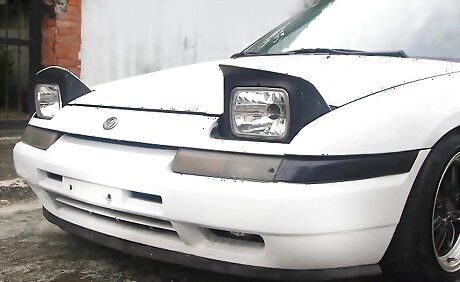
Finished.



















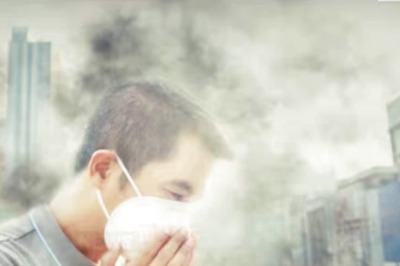
Comments
0 comment